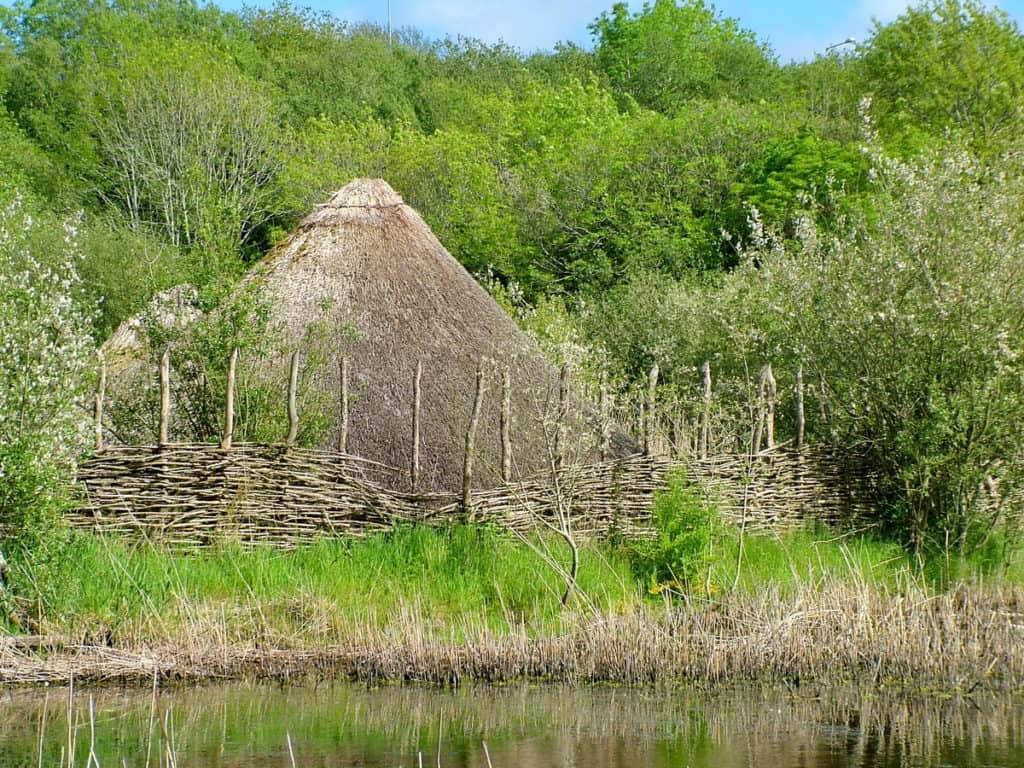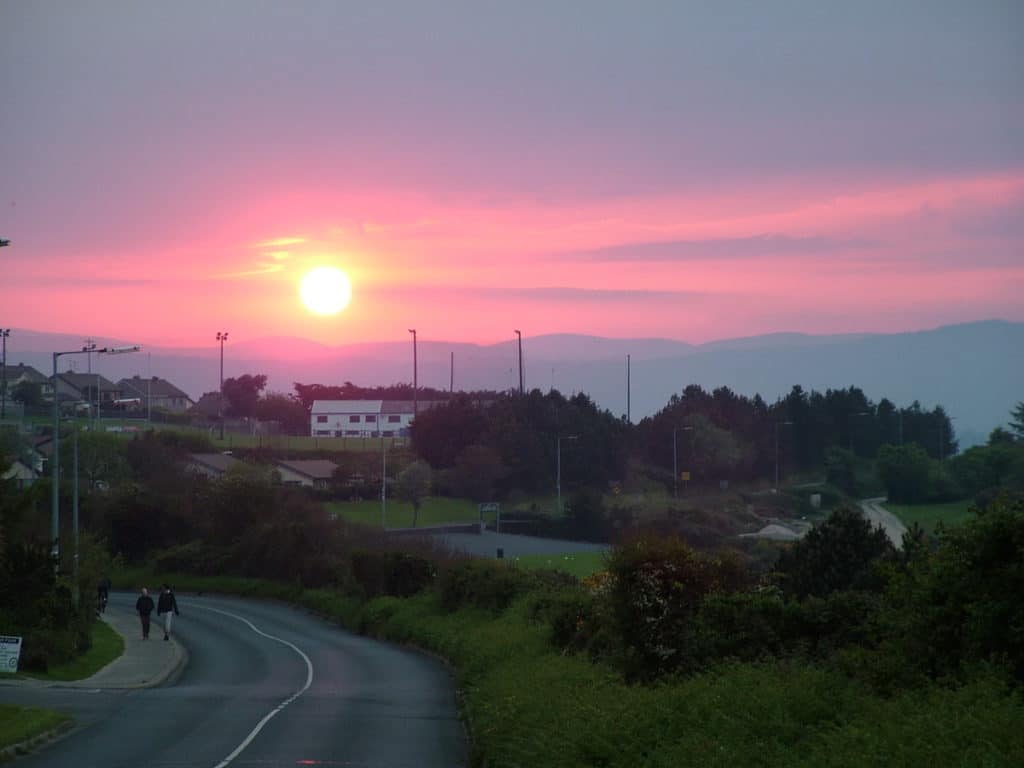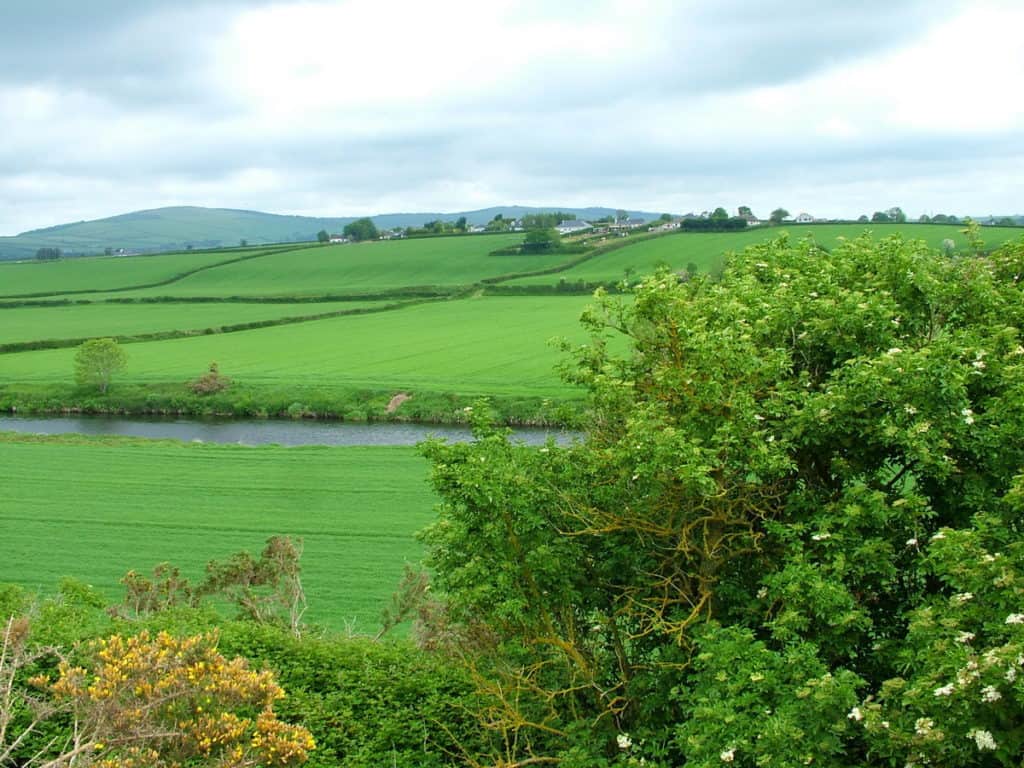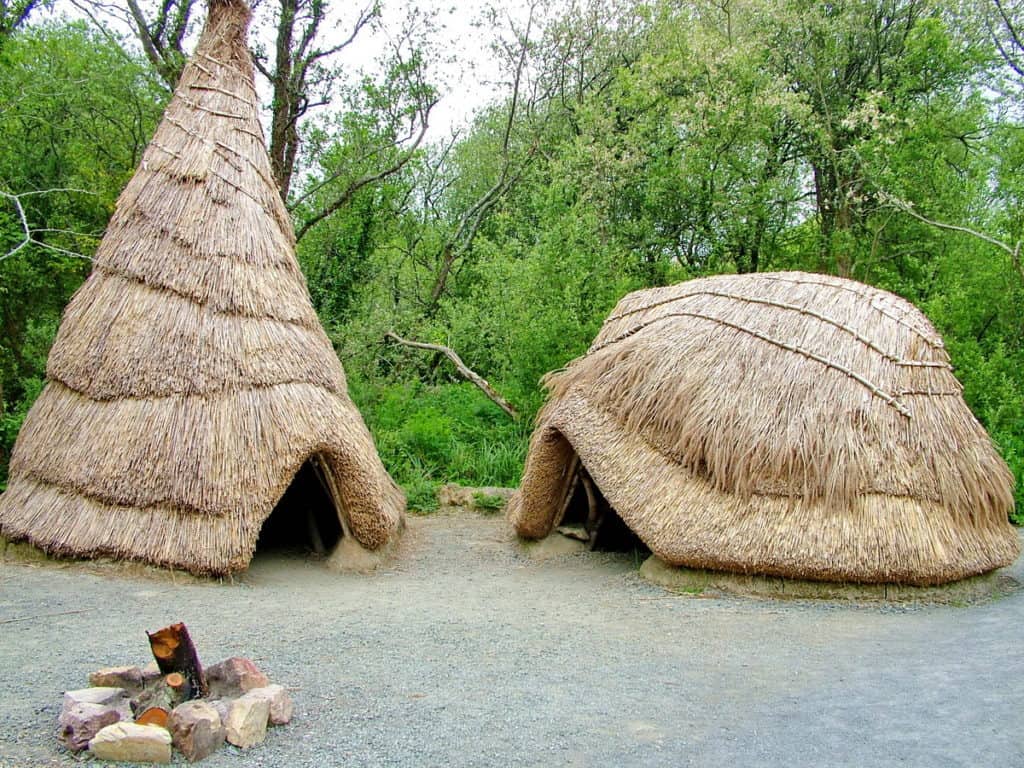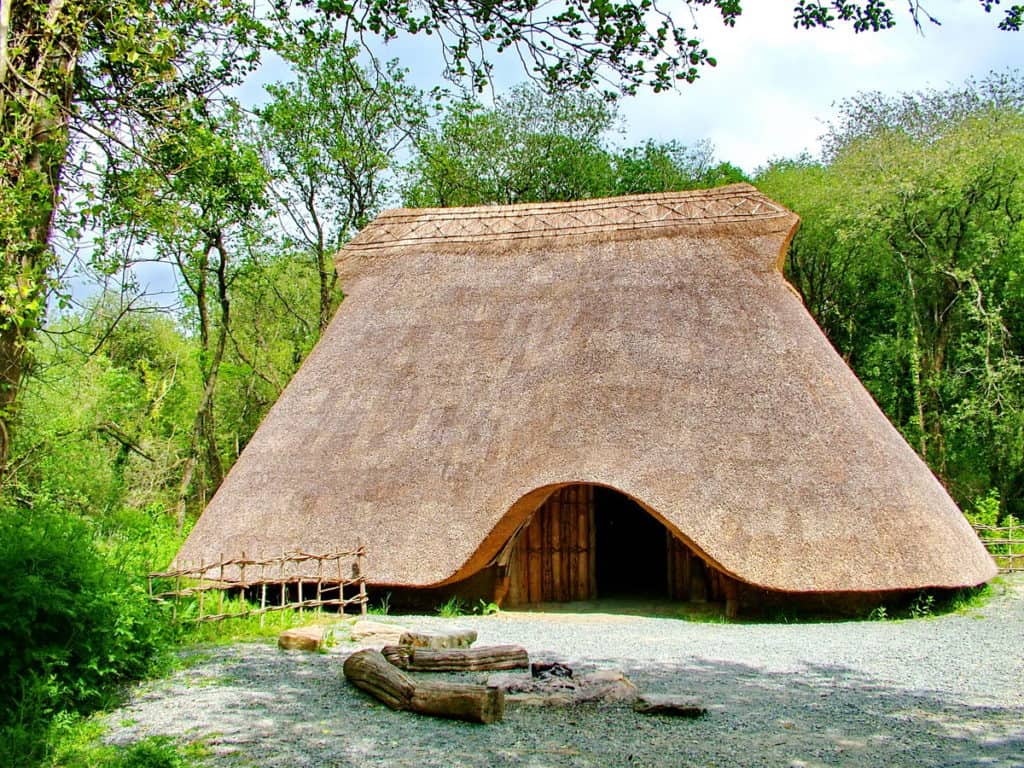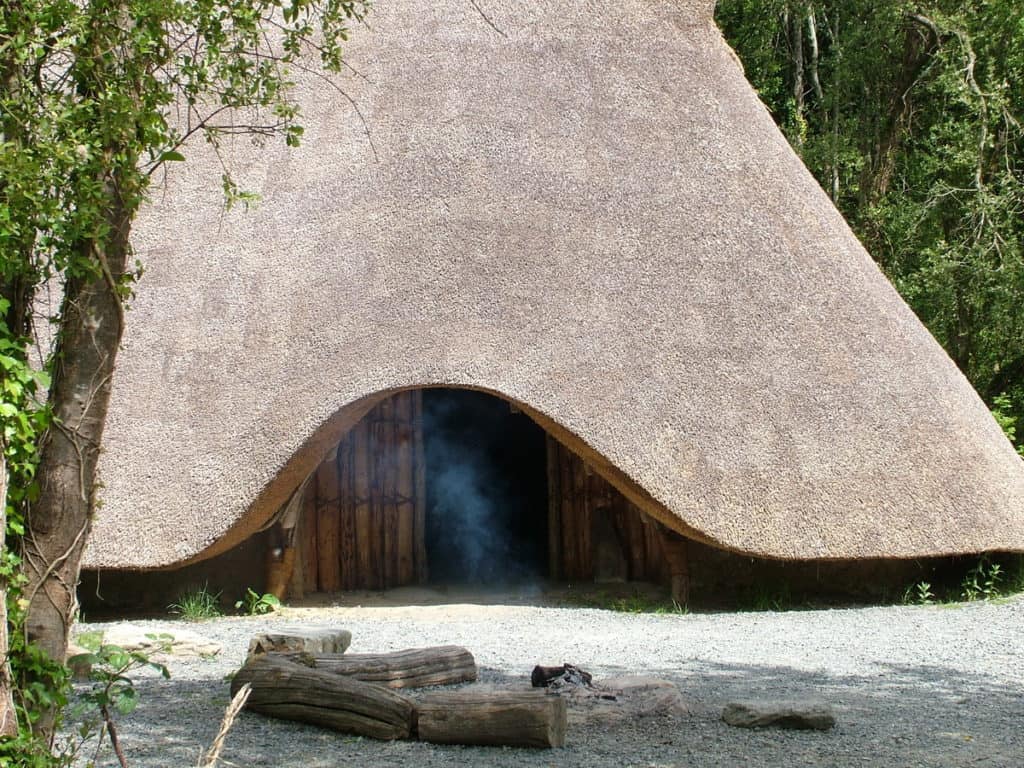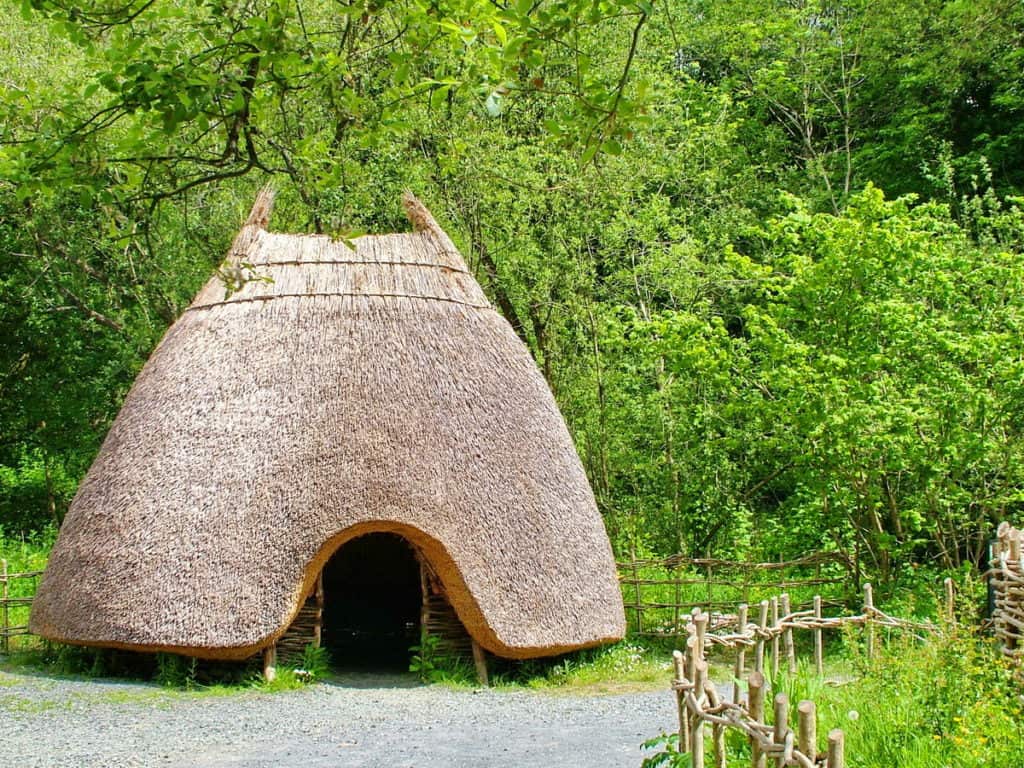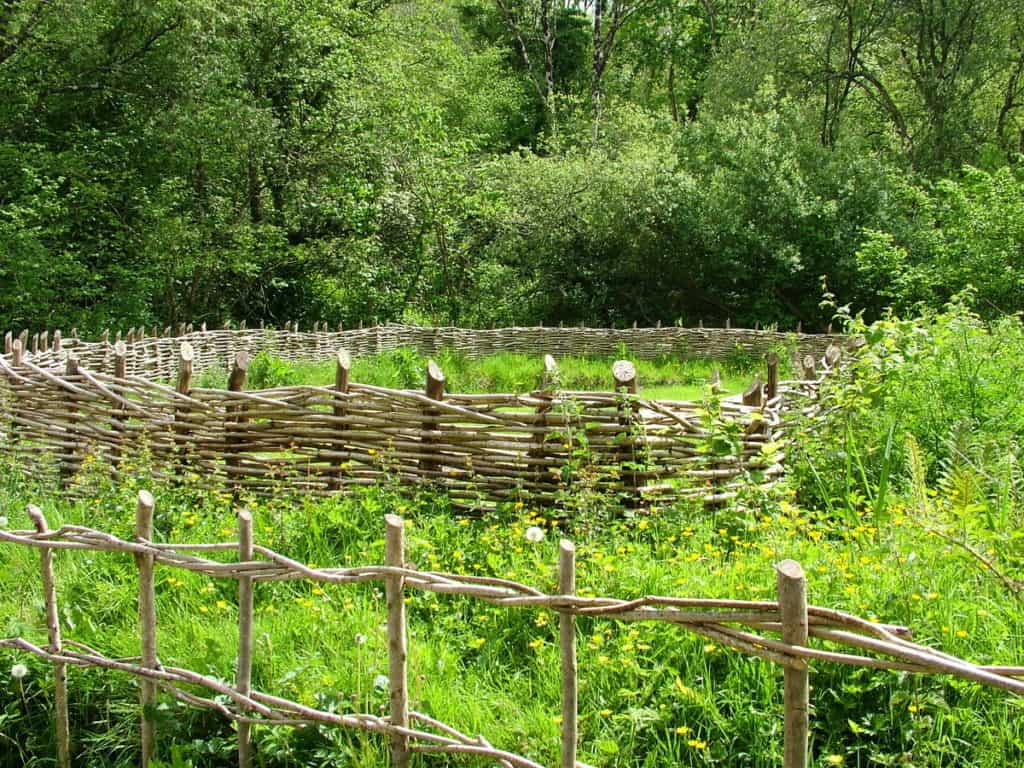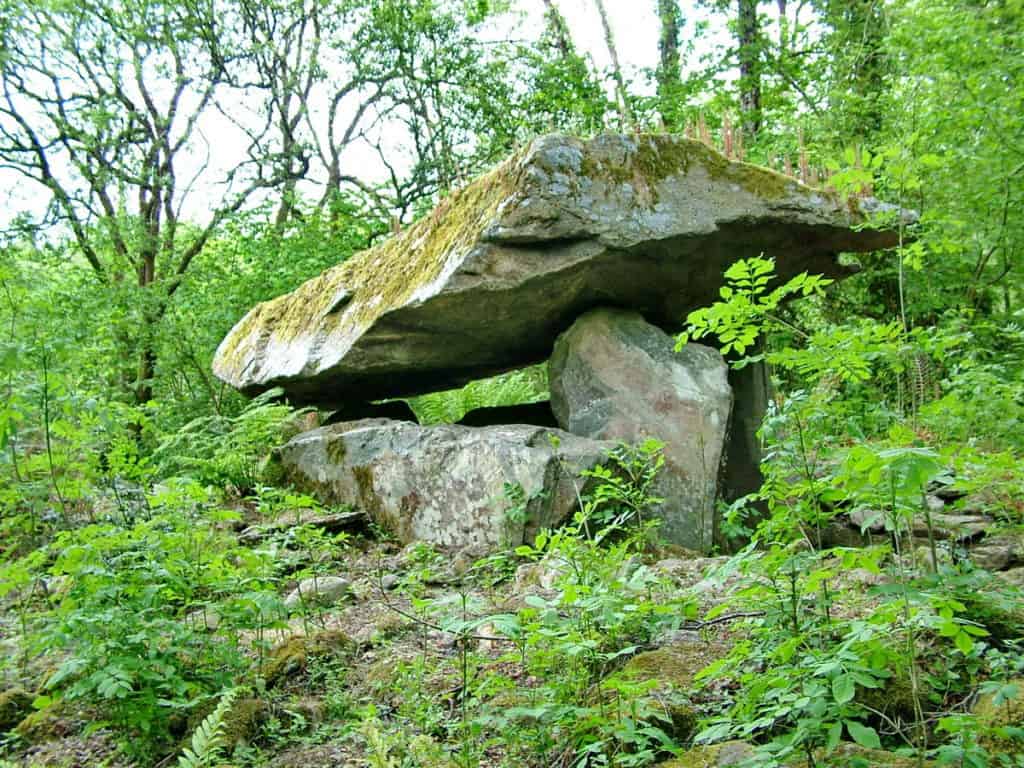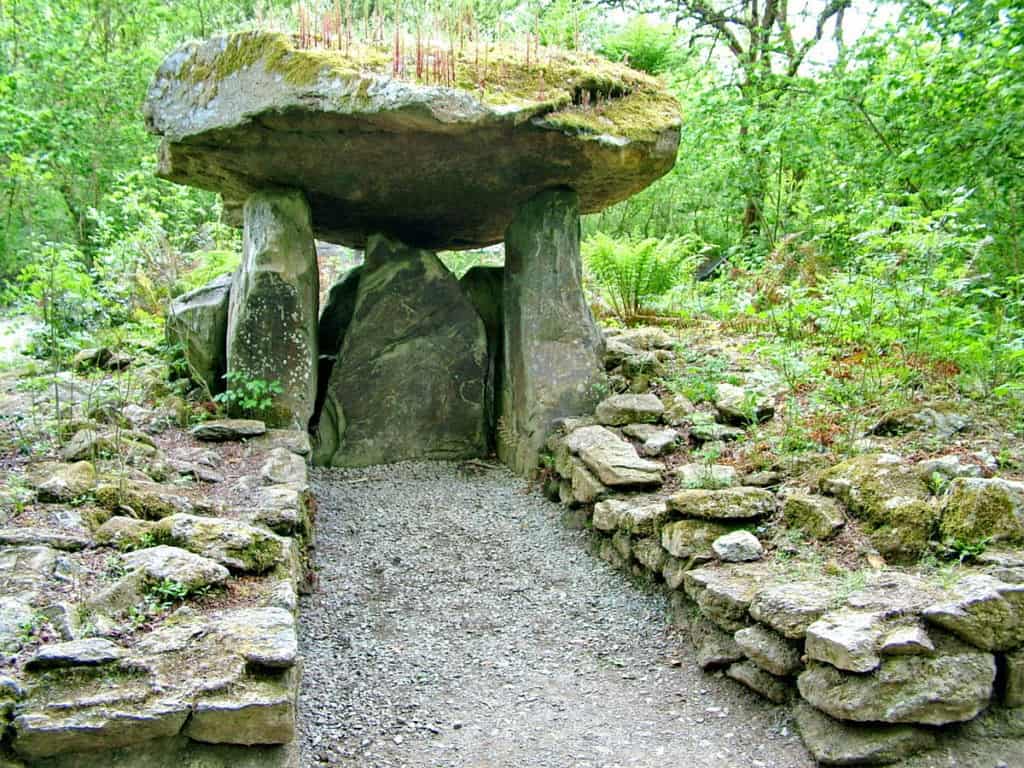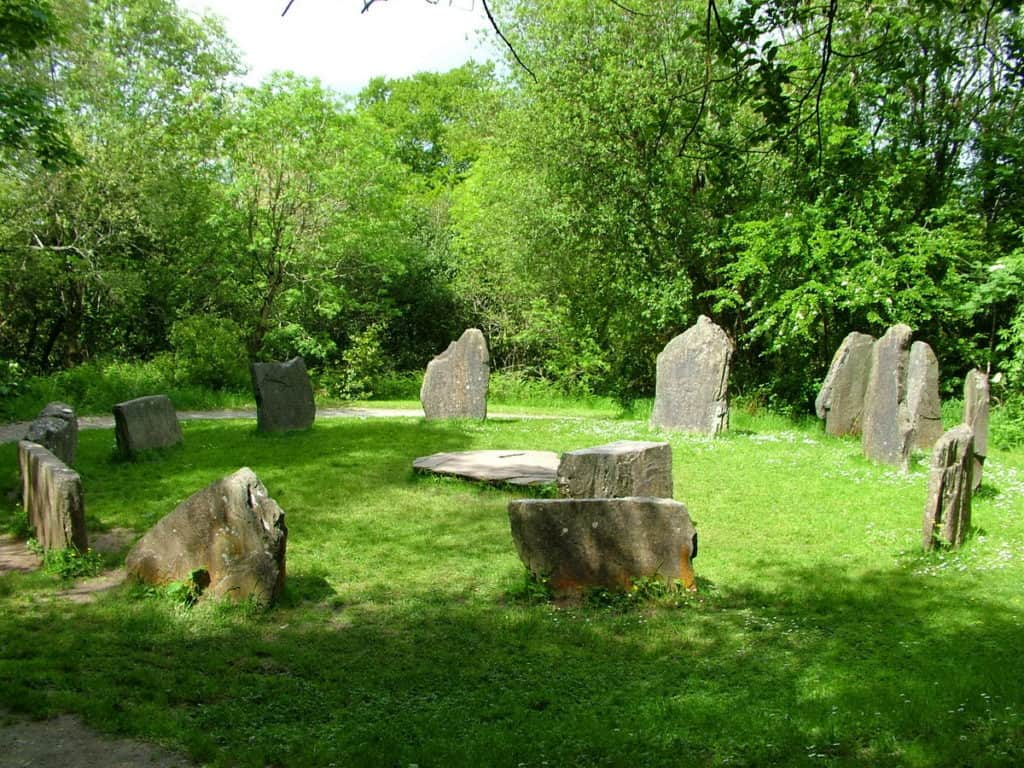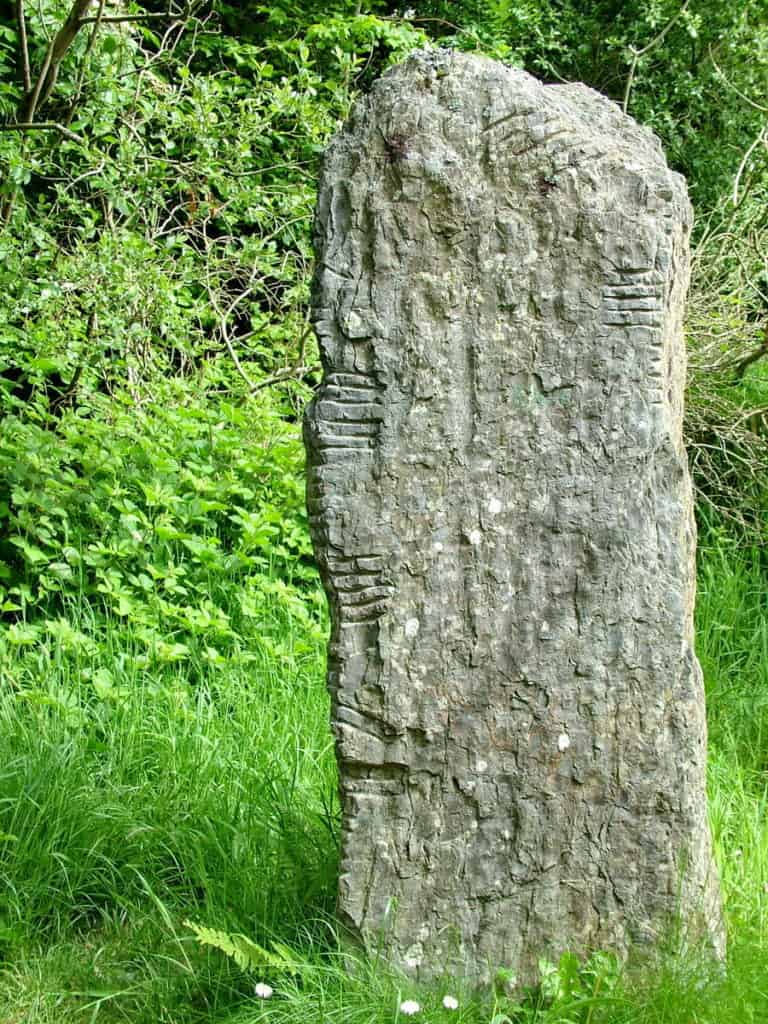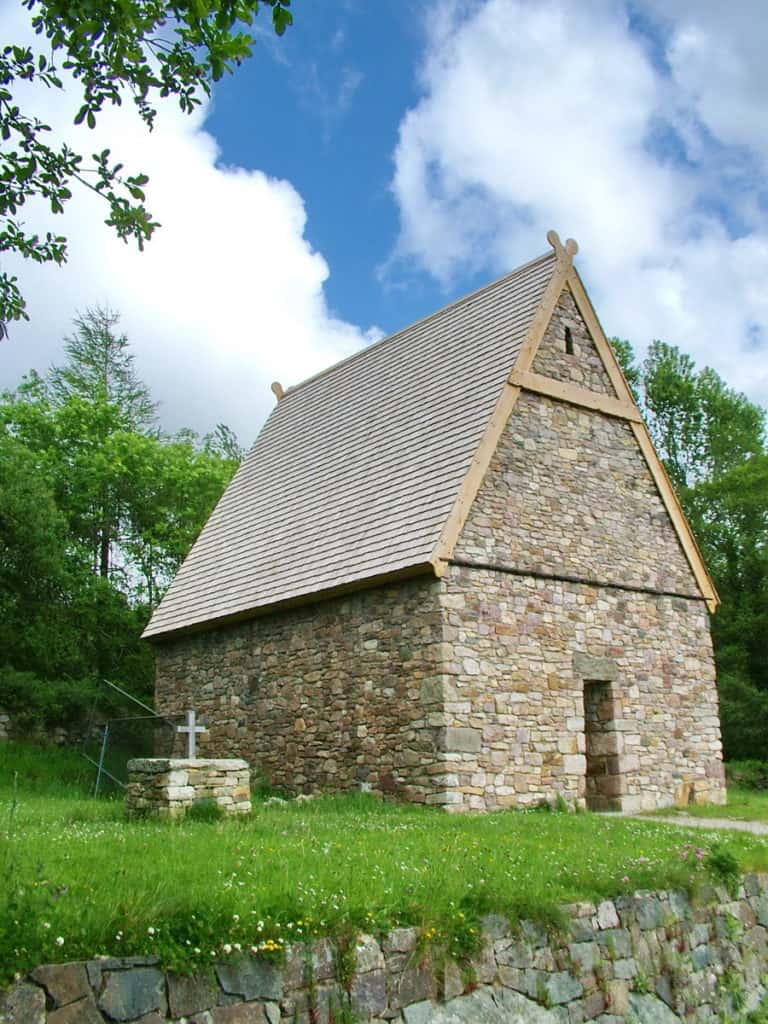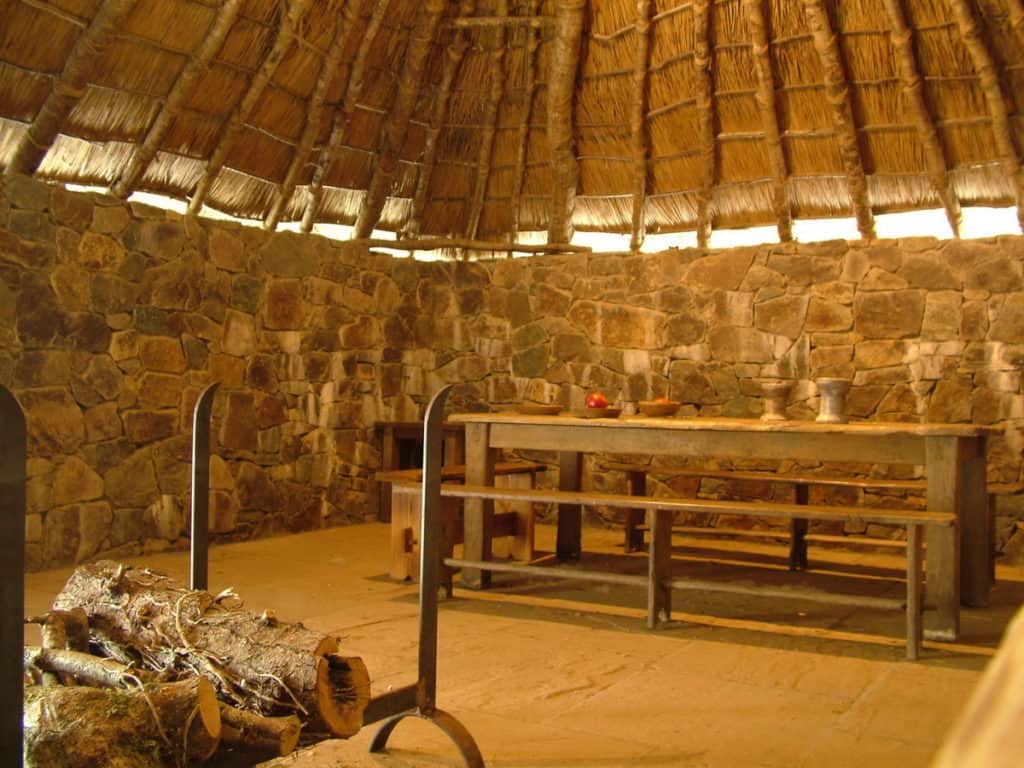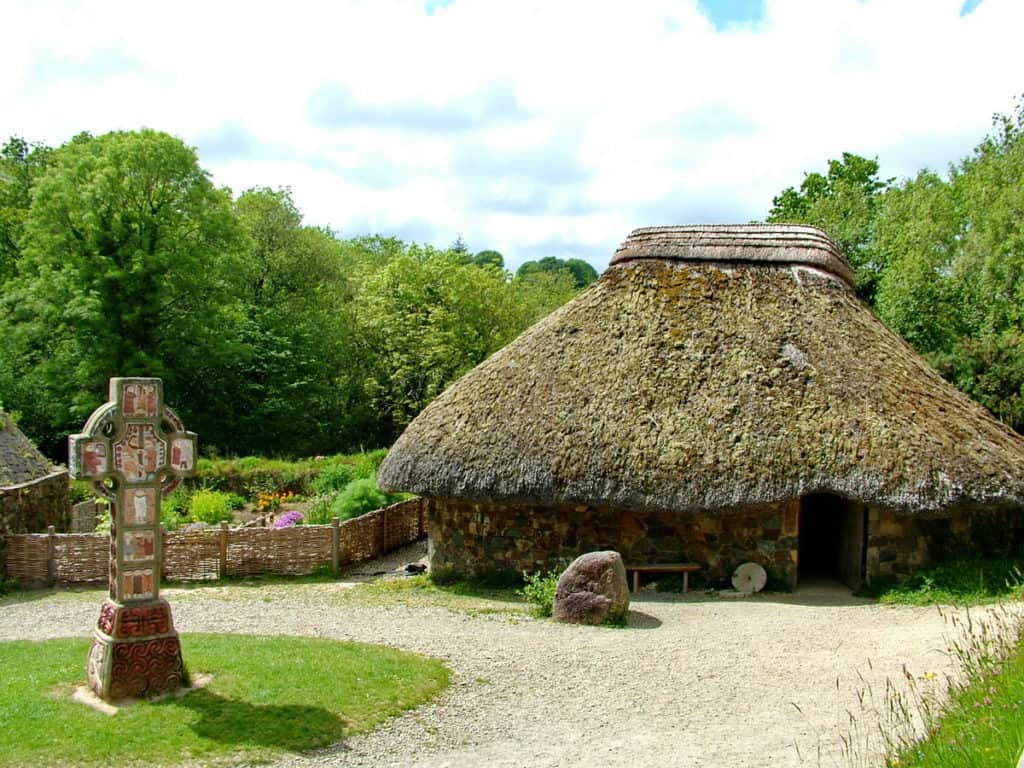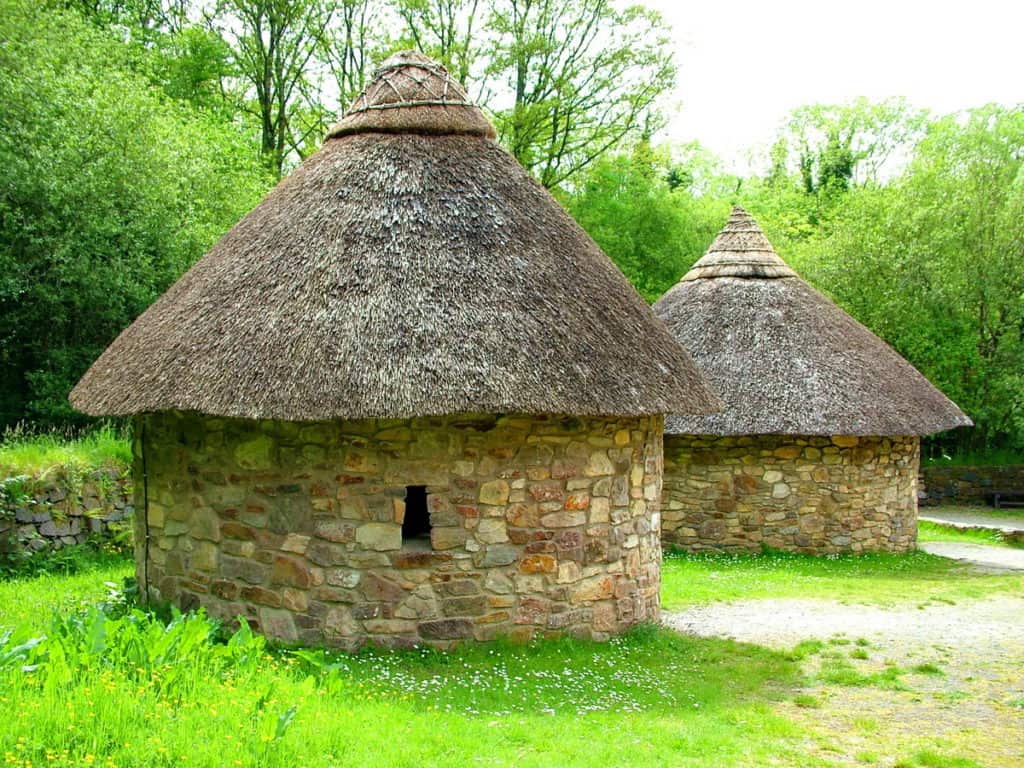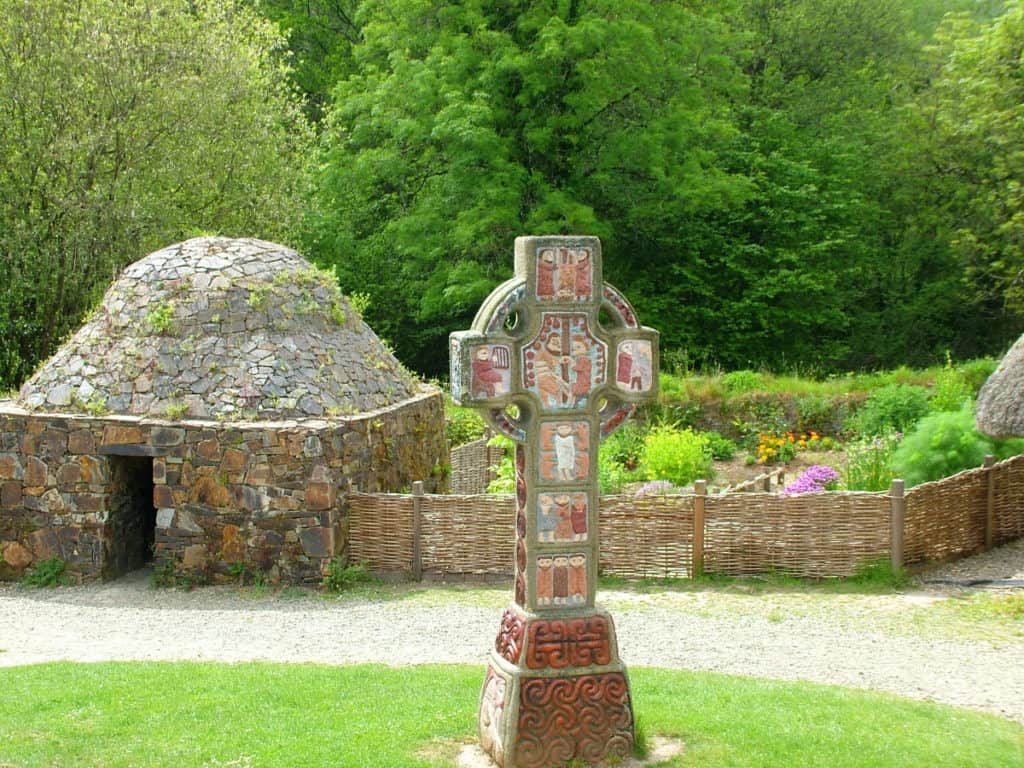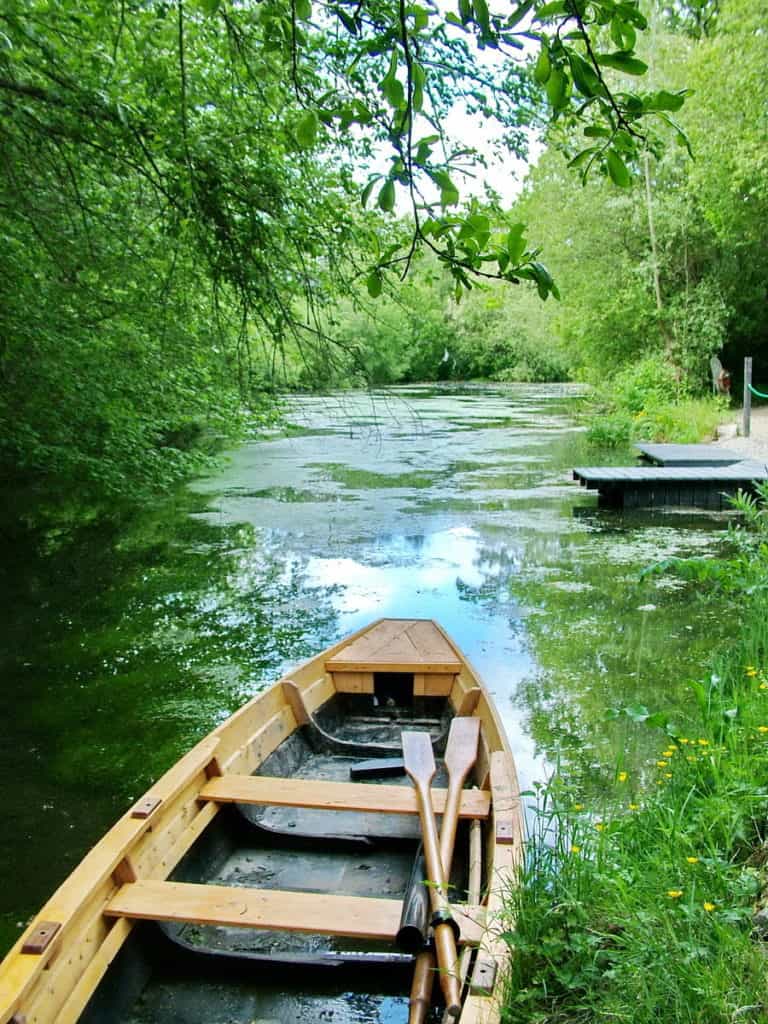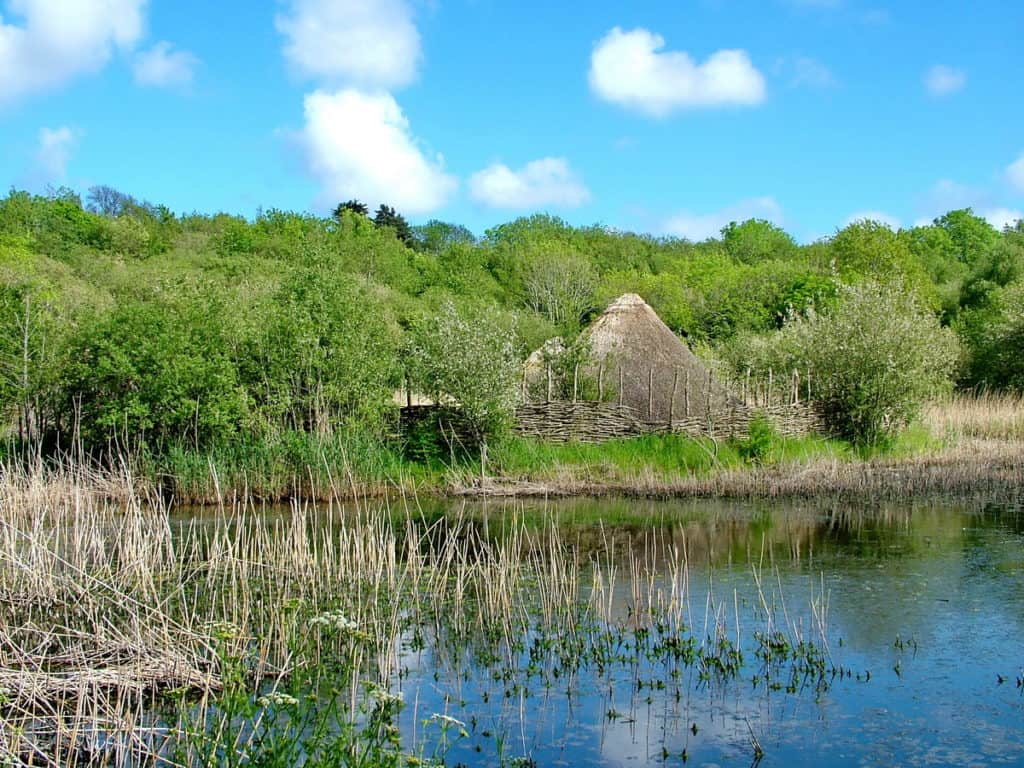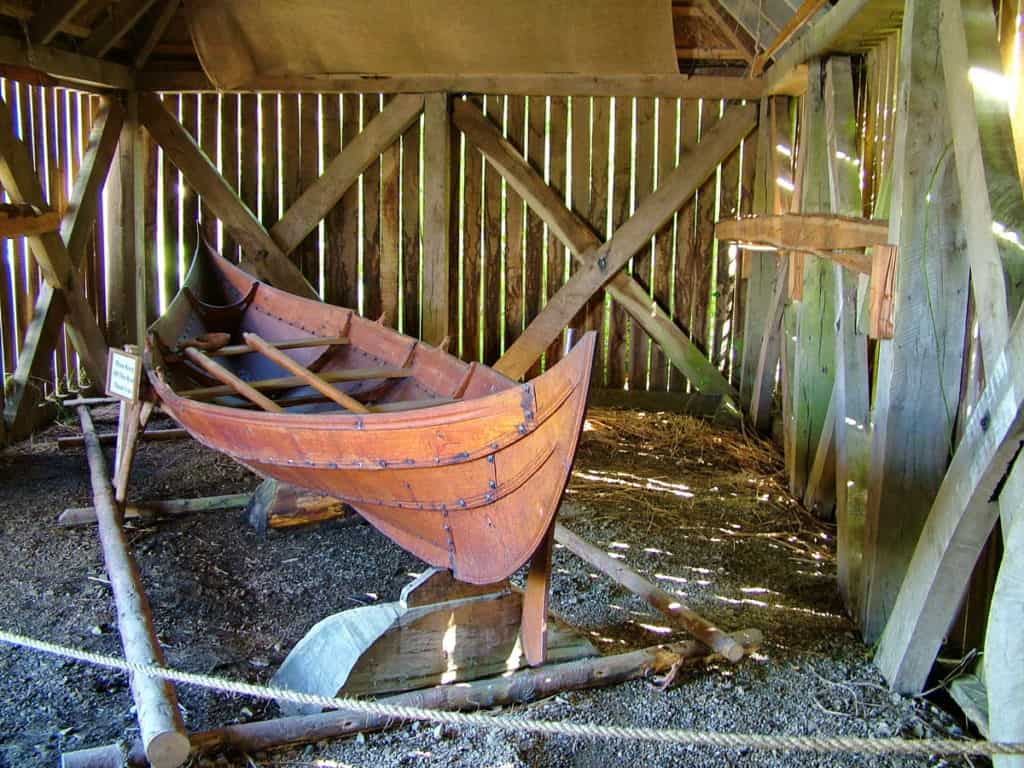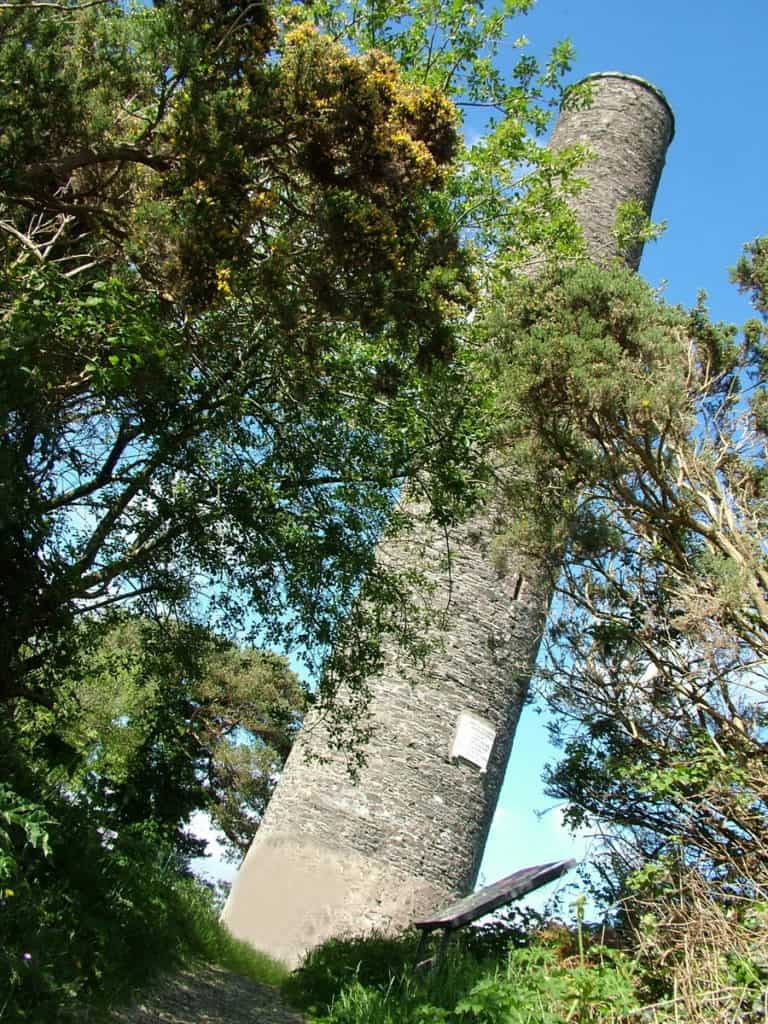Stepping Back In Time at the Irish National Heritage Park
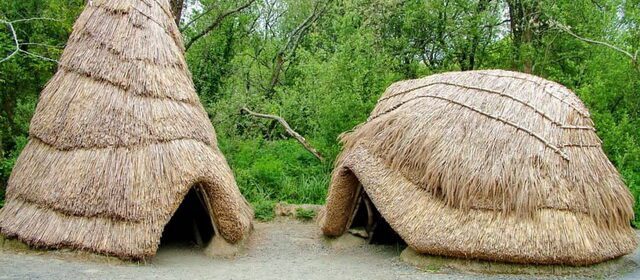
The Irish National Heritage Park near Ferrycarig, County Wexford, Ireland, is an open-air museum that explores the world of Ireland’s cultural history in a beautiful natural setting. As Bob and I traveled across Ireland, we were constantly reminded of its more recent past in the ruins and castles that we saw, but for an understanding of history dating back to prehistoric times, we had come to this 35-acre Park.
An evening earlier, near Wicklow, Bob and I were blessed to see a beautiful red sunset. Another gentleman happened by who was also trying to capture a nice photograph of the blazing orb. He told us that in Ireland, the saying goes: A red sunset at night is a shepherd’s delight. A red sunset in the morning is a shepherd’s warning.
Perhaps the old adage had some truth to it because the following morning met us with sunshine and warm temperatures, a perfect day to continue sightseeing. The landscape changed as we motored along, and soon turned to lush, green fields edged with dense hedgerows.
Once at the Irish National Heritage Park, Bob and I opted to discover the history on a self-guided tour so that we could really take our time and immerse ourselves in the surroundings. Everything was well laid out with detailed signage and an easy-to-follow walking trail, and situated there on the banks of the picturesque River Slaney, the location set the tone for a relaxing stroll while we enriched our minds.
The First People who came to Ireland some 9,000 years ago did so after the last Ice Age. They were hunters, fisherfolk and gatherers so utilized huts of simple construction because they moved from place to place often. The huts were either basket shaped or built like a tepee and were thatched with branches or reeds. The well-crafted recreations meant that we did not have to imagine what one of their campsites looked like; one was there in front of us.
Over the next 3,000 years, the idea of farming spread from the Near East until it was finally practiced all throughout Europe. The First Farmers showed up in Ireland about 6,000 years ago as groups of farming families that often built their homes together to form a small community.
Because farmers cleared farmland from the forests, planted crops and kept livestock, there no longer was a dependency on hunting and gathering as sources of food. Now able to remain in one place for long periods of time, the farmers put more effort into their dwellings.
Their permanent structures were built from timber or wattle, which is an arrangement of stakes interlaced with twigs and branches, and the buildings were rectangular and featured doors.
The roofs of these dwellings were high-pitched and thatched with some even having tall gables. The interior was divided into 2 or 3 rooms with a separate area for sleeping.
With farm animals to contain, the First Farmers constructed fencing from long stretches of wattle using the plentiful supply of raw materials. A new skill was also learned…the making of pottery.
Along with the Stone Age Farmers came their traditions and cultural practices. To honour their dead, megalithic tombs were constructed. There are four different types of tombs that the farmers built…Wedge-Tombs, Court-Tombs, Passage Tombs and Portal Tombs. Burials took place in these monuments, but they also served as territorial markers, were used to track the movement of the sun, and were places of worship.
Portal Tombs such as this one, otherwise known as a Dolmen, are characterized by a giant capstone that is partly balanced on two portal stones. We could see why they often were referred to as Giants’ Tables. Each type of tomb would have been covered with a cairn of rocks.
Things in Ireland changed quite dramatically about 4,500 years ago. The environment became colder and wetter creating perfect conditions for swampy woodlands and bogs to form. Stone Age tombs were abandoned because of the waterlogged land. It is in the ensuing pools and bogs that significant numbers of metal weapons and tools have been found, evidence that the Bronze Age had begun. It is thought that these were offerings made to appease the water gods. At the same time, Stone Circles also came into existence. With stones strategically placed, they were used to track the movement of the sun, moon and stars.
As Bob and I roamed among the full-scale reconstructions, we contemplated all the long-vanished ancestors that once occupied this land. The Ogham Stone, in particular, made our imaginings more tangible. Inscribed with an ancient form of Irish using letters of the Ogham Alphabet, the notches and lines carved into the edges of the stone read, “Eoghan, grandson of Mac Triuin”. This early medieval alphabet is based on the Latin alphabet but each letter also represents the name of a different tree. This is an indication that Celtic people were living in Ireland from about 1,700 years ago.
Stepping forward in time by another 100 years, Bob and I found ourselves in an Ireland where Christianity had taken a foothold. Originally based on the diocesan model led by bishops, the religion soon transposed into the monastic model led by abbots, which had more in common with the Celtic Church.
This Early Christian monastery would have provided sanctuary for the monks and nuns who dedicated their lives to worshiping God.
Some of the Irish monasteries became so large and powerful, with both religious and lay people living in them, that they operated as a small town.
The monasteries were divided into sacred and secular spaces and often had streets lined with dwellings for the clergy and lay people who served the church.
It was an Early Medieval tradition to raise large Christian crosses that were richly decorated with carvings. This gorgeous High Cross is a prime example of those free-standing stone crosses erected on the east coast of Ireland. The quaint Stone Beehive Hut or Cell was a structure more common on the west coast of Ireland at that time.
Bob and I were particularly pleased when the time travel took us into areas of the fen woodlands and wetlands. Winding between ancient trees and pools of water, the Hazel Woodland Trail gave us a chance to see and experience the conditions faced by Ireland’s Stone Age ancestors.
How delightful to find a Crannog in its own natural setting on a man-made island. Built at shallow spots in lakes using stones, soil, peat, bones and anything else available, the artificial islands first were used for fishing but soon developed into well-protected homesteads that even were used as late as the 17th century.
Among other sights seen that day were a Medieval Ring Fort, a prime example of a rustic kiln used to dry corn, a Horizontal Water Mill, a Fulacht Fia (primitive outdoor kitchen), and a Viking Boatyard. It speaks to the seafaring Vikings that plagued Ireland with raids and looting of coastal villages. Between 800 AD and 1000 AD, the Vikings had such a negative impact on coastal areas that many Irish settlers moved inland.
Another symbol of Early Christians was the Round Tower. We had already seen one like this at Glendalough. Prior to that, Bob and I had no prior insight into the history of these towers that were built as bell towers for the local monasteries. These iconic structures became popular during the 9th Century and also served as treasuries and places of refuge. Elements of their design were imported from continental Europe, but Irish Round Towers had a uniqueness founded on the position of the door well above ground level, numerous windows staggered the height of the tower to light the interior, and, around the top, 4 windows aligned with the cardinal points on a compass.
As we prepared to leave the Irish National Heritage Park and the Wexford area, a rear view glance rewarded us with yet another impression of the area when we espied Ferrycarrig Tower House on the north shore of the River Slaney. It was built in the 1400s to protect goods and passengers on ferry crossings across the river, this in a time when no bridge yet existed. There sure is no lack of history in the country of Ireland.
Frame To Frame – Bob and Jean

